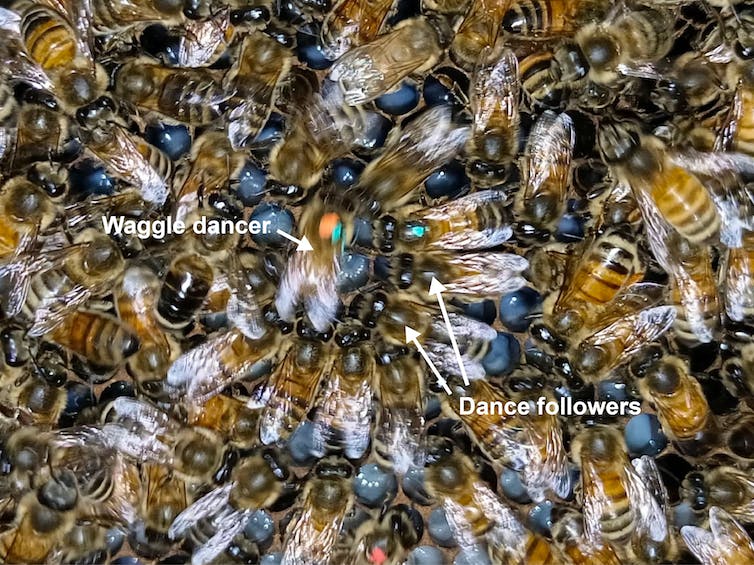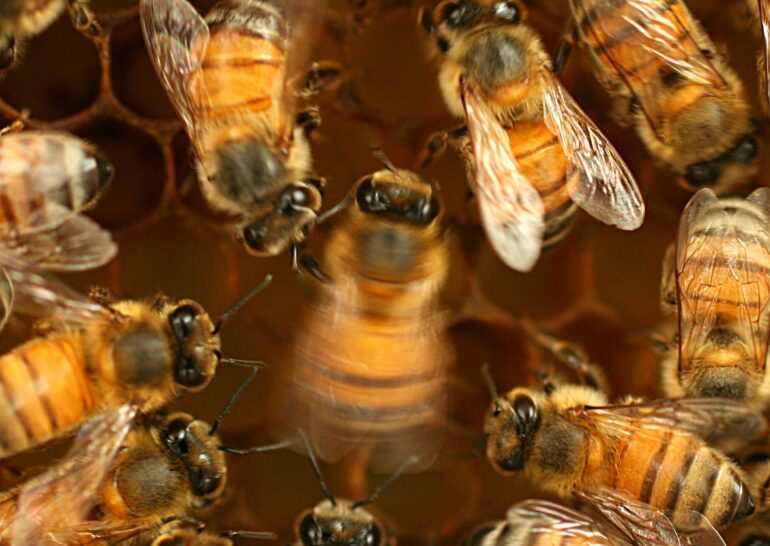The Greek historian Herodotus reported over 2,000 years ago on a misguided forbidden experiment in which two children were prevented from hearing human speech so that a king could discover the true, unlearned language of human beings.
Scientists now know that human language requires social learning and interaction with other people, a property shared with multiple animal languages. But why should humans and other animals need to learn a language instead of being born with this knowledge, like many other animal species?
This question fascinates me and my colleagues and is the basis for our recent paper published in the journal Science. As a biologist, I have spent decades studying honeybee communication and how it may have evolved.
There are two common answers to why language should be learned or innate. For one, complex languages can often respond to local conditions as they are learned. A second answer is that complex communication is often difficult to produce even when individuals are born with some knowledge of the correct signals. Given that the ways honeybees communicate are quite elaborate, we decided to study how they learn these behaviors to answer this language question.
What is a waggle dance?
Astonishingly, honeybees possess one of the most complicated examples of nonhuman communication. They can tell each other where to find resources such as food, water, or nest sites with a physical “waggle dance.” This dance conveys the direction, distance and quality of a resource to the bee’s nestmates.
This video, from PBS Nova, shows bees getting their “waggle dance” on.
Essentially, the dancer points recruits in the correct direction and tells them how far to go by repeatedly circling around in a figure eight pattern centered around a waggle run, in which the bee waggles its abdomen as it moves forward. Dancers are pursued by potential recruits, bees that closely follow the dancer, to learn where to go to find the communicated resource.

The waggle dancer gives the instructions, and the followers learn where they can find the indicated resource.
Dong Shihao, CC BY-ND
Longer waggle runs communicate greater distances, and the waggle angle communicates direction. For higher-quality resources such as sweeter nectar, dancers repeat the waggle run more times and race back faster after each waggle run.
Making mistakes
This dance is difficult to produce. The dancer is not only running – covering about one body length per second – while trying to maintain the correct waggle angle and duration. It is also usually in total darkness, amid a crowd of jostling bees and on an irregular surface.
Bees therefore can make three different types of mistakes: pointing in the wrong direction, signaling the wrong distance, or making more errors in performing the figure eight dance pattern – what researchers call disorder…
